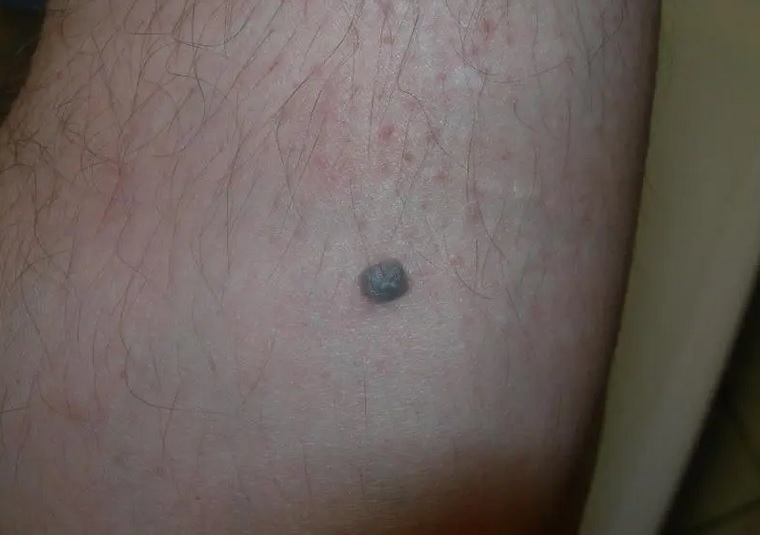Nodular malignant melanoma (MMN) is a particularly aggressive subtype of melanoma, a type of cancer that originates in melanocytes, the cells responsible for producing melanin. This form of melanoma accounts for approximately 15% of all melanomas in Caucasian patients and 60% of deep melanomas. It is characterized by rapid “vertical” growth, i.e. deep into the skin, right from the initial stages.

The MMN often presents as a black or bluish nodule or polypoid lesion, which may become ulcerated or crusted. The edges of the wound are usually smooth. There are rarer cases in which the MMN is amelanotic, i.e. devoid of melanic pigmentation, presenting itself with a pinkish colour. In these situations, dermatoscopy can be particularly useful for identifying a residual pigmentary reticulum on the edges of the lesion, indicative of the melanocytic origin of the same.
In the initial stages, the MMN may be asymptomatic, but as the disease progresses, an ulceration may appear which may bleed. The differential diagnosis of MMN includes pigmented seborrheic keratosis, pigmented basal cell carcinoma, and dermatofibroma.
Because of its rapid growth and tendency to rapidly spread to other organs (metastasize), the prognosis for MMN is generally more severe than for other forms of melanoma. Therefore, early diagnosis and timely treatment are especially important. Treatment of MMN may include surgical removal of the tumor and surrounding area, immunotherapy, radiation therapy, or chemotherapy, depending on the stage of the disease at the time of diagnosis.